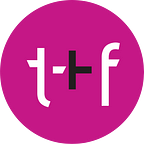Writing Qualitative Research Proposals — A Four-Part Series
Musical performances with complex stage setups can result in one of two ways: a beautiful choreography or a tragic mess. In crafting contracts with venues, the musician’s representatives sometimes insert random requests in the instructions — i.e., remove all blue M&Ms from the singer’s candy bowl. These random requests can be interpreted as diva-ing, but it reveals far more. It is a means to vet the venue to ensure they have read the entire contract. Are they really paying attention to all the details? Knowing that the contract has been thoroughly read, and all details given due diligence typically implies that the show will go off without a hitch.
In qualitative research, much like in complex stage setups, there are a lot of moving parts. These moving parts are a reality and a point of vulnerability for the researchers doing the work.
Meena and I are sometimes asked about our proposals: how do we write them, what do we include. In the spirit of transparency, we wanted to share the key components of our proposal process.
In this five-part series, we share how we craft qualitative research proposals. Going into the proposal writing process, we have some information but not all. We use the proposal process as a means of beginning a conversation: one that not only focuses on the study design, but also, one that touts our knowledge, and flexibility in crafting a research study that meets the needs of the client, while preserving the integrity of a credible approach. As we gather this information, we keep the conversation going by providing more project facts. We always begin at a high level, and then end with more detail.
Part 1 covers our initial proposal overview. Rather than investing a lot of time in a detailed write-up, we give our clients a sense of the project trajectory.
Part 2 goes into considerations for the budget calculation. We include the budget calculation in our proposal overview, but in this part we will dive deeper into the minutiae of fees and expenses.
Part 3 addresses the conversations and back and forth that ensue as a result of sharing the proposal overviews with the client.
Part 4 addresses the robust proposal itself, which includes all the logistics and expectations.
We encourage others in our domain to weigh in. We would love to hear other processes that have worked for you. Last year, for instance, Meena attended a conference in which a freelance researcher described the reason why he very transparently shares his budget calculations and hourly rate with clients. While it is not something we practice, it was an interesting perspective to consider in some situations.
